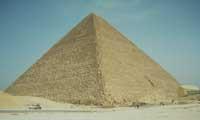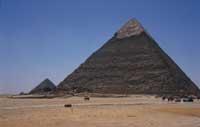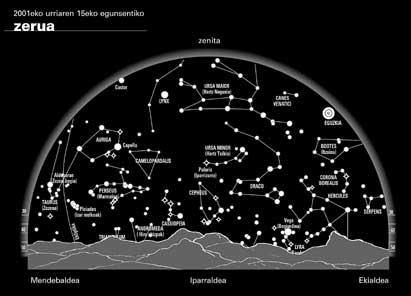Astronomy, a guide to ancient civilizations

The riches of Egyptian civilizations attract as many researchers as tourists. And it is that, besides being a refuge of treasures, from the architectural point of view, they are amazing. On the one hand, because they have maintained the weather conditions and aggressions of all kinds for so many years, and on the other, because they have a very concrete and surprising orientation. In fact, the Egyptian pyramids are directed at four cardinal points with exceptional precision.
But IV. the kings Keops, Kefren and Mikerinos of the dynasty, how do they have such precise orientation the pyramid of Gizeh promised to build about 4,500 years ago? In answer to this question, XIX. Since the nineteenth century, several researchers have put themselves to heaven and have imposed two ideas. On the one hand, that solar observation contributed to marking the orientation and, on the other, that astronomy was one of the pillars of architecture. The latter may be the most direct theory, but when determining which stars were still based on the trajectory, disagreement predominates.

In 1931 the expert Zinner and in 1948 Chateley claimed that the Egyptians relied on observing the Sun to guide the pyramids. For both, the Egyptians relied on the shortest shade of midday to determine the north-south direction. Much later, researcher Gallo said they took advantage of the path of the Sun to define this direction. In his opinion, to design the direction north-south used the bisector of the angle formed by the points of entry and exit of the Sun. However, although the Sun gave useful indications, it seems that with these observations it was impossible to orient itself so well. Therefore, XIX. In the nineteenth century the expert Piazzi Smyth and the latest theories today ensure that the secret is in astronomy.
Exceptional knowledge of astronomy
The ancient civilizations did not build the buildings in any way and, apparently, one of the bases of architecture was astronomy. They had a level of knowledge that surprised us. But, how is it possible to obtain such a precise result without current instruments? The only answer is that every day, or better said, from night to night, spending the hours looking at the sky, but not to dream, but to analyze the journey of one or several stars.

XIX. Since the XIX century, theories based on the path of several stars have been exposed to explain the alignment of the pyramids. Although all were credible, the most recent covered the rest, so it does not seem to be entirely correct.
One of the last theories was published in the journal Nature last year by Kate Spencen, an expert in Egyptian culture. The main contribution of this theory was to say that they were based on a pair of stars instead of on a single star route to achieve an exact alignment. For Kate Spence, the straight line between the stars Kochab and Mizar, located on both sides of the pole, at a given time, passed through the pole, which allowed an exact alignment of the pyramids. In the opinion of this researcher, that specific moment is d. C. C. It is located around the year 2478, so the great pyramid of King Keops began to be built at that time. Even if this is possible, it should be remembered that with the dates that until now were considered safe there are 80 years of difference, which has disbelieved the theory.
Final Theory Final Theory

The theory that the researcher of the Instituto de Astrofísica de Canarias, Juan Antonio Belmonte, has just published in the journal Journal for the History of Astronomy, goes along the same line, but covers other stars. According to him, the Egyptians managed to determine the four cardinal points by looking at the stars Phecda and Megrez. These two stars are the two brightest stars of the constellation, today known as the chariot of the Big Bear. And the straight line that joins these two stars, as the current polar star points out, at that time had the same validity. That is, the line that passed through the stars Phecda and Megrez pointed directly to Thuban, the north star of that time.
However, the idea of this theory is not new. In 1952, Pola suggested to the expert, but without giving mathematical explanations. On this occasion, Juan Antonio Belmonte has given a long explanation with mathematical foundations. In addition, unlike Kate Spenc's theory, the new theory poses no chronological problem. According to this new theory, the greatest precision is found in C. It was obtained in the year 2562, so the great pyramid began to be built around that year. Introduction to the reign of Keops When placed between 2589 and 2551, this date coincides with the previous calculations. Finally, Belmonte's theory, in addition to mathematical explanations, explains many stories based on the mythology and customs of the Egyptians. With all this information, new doors have been opened to know how the Egyptians understood the cosmos. The one who is thinking of researching will have nothing to see!
Published in 7K.
Buletina
Bidali zure helbide elektronikoa eta jaso asteroko buletina zure sarrera-ontzian










